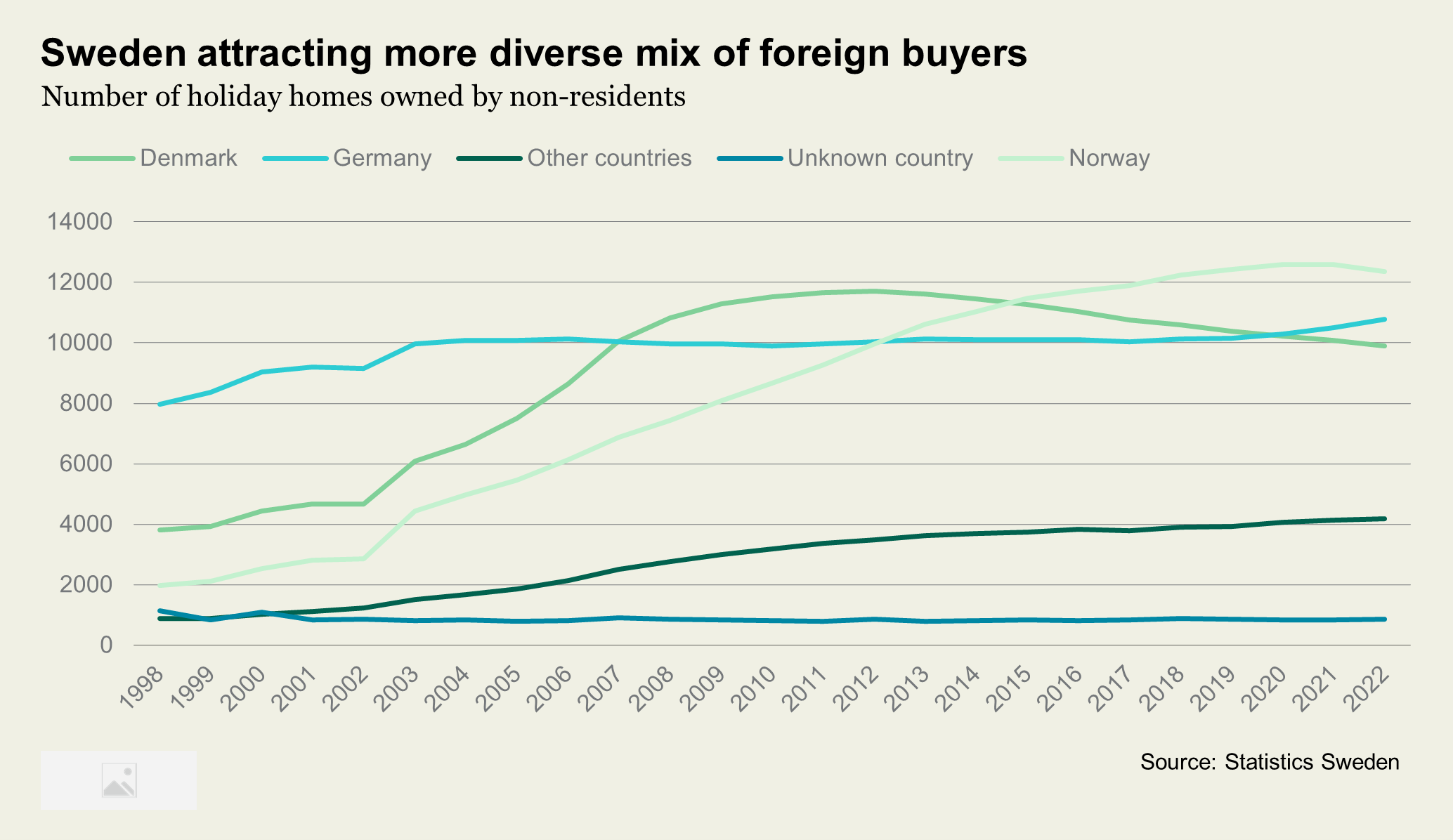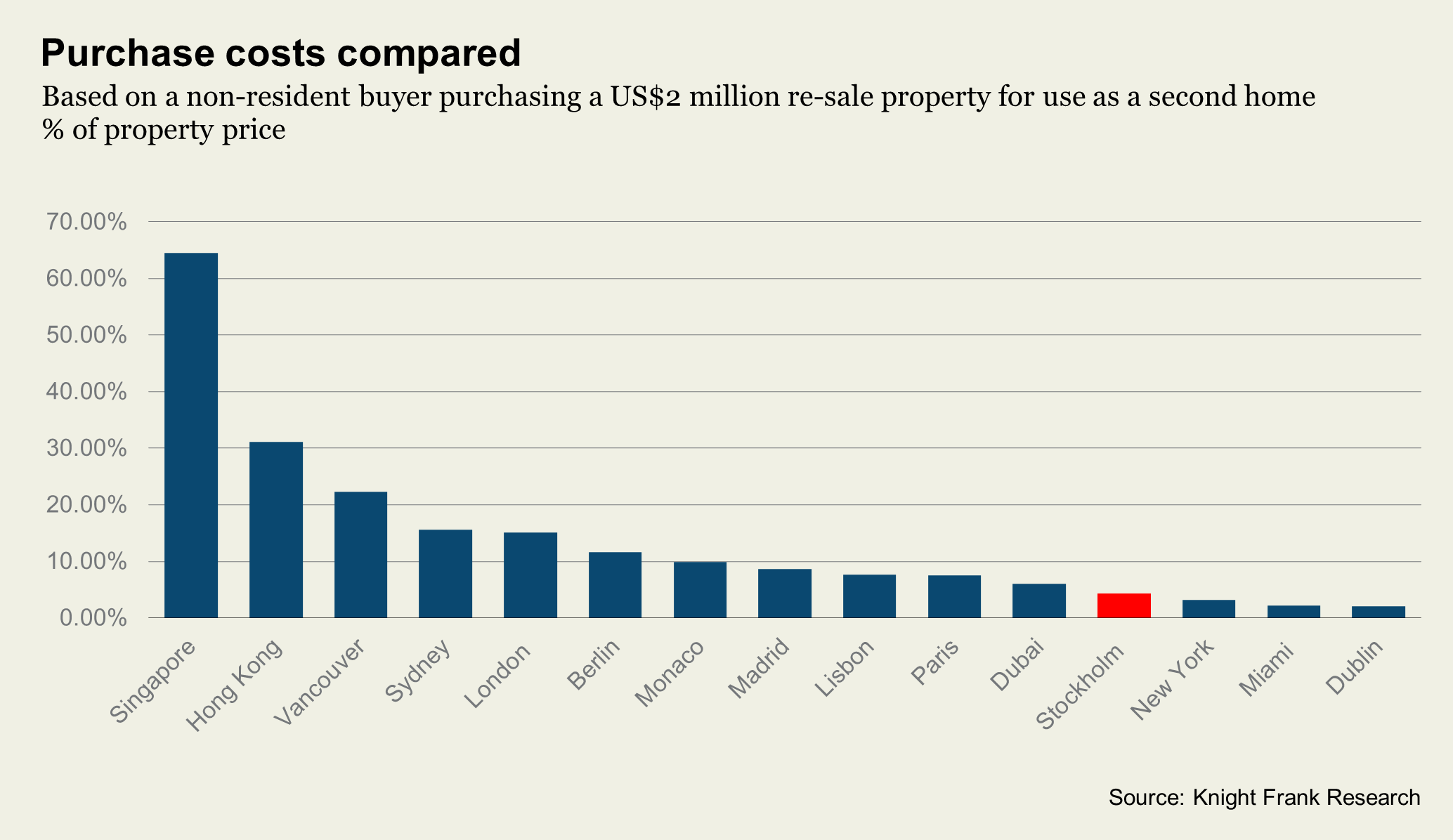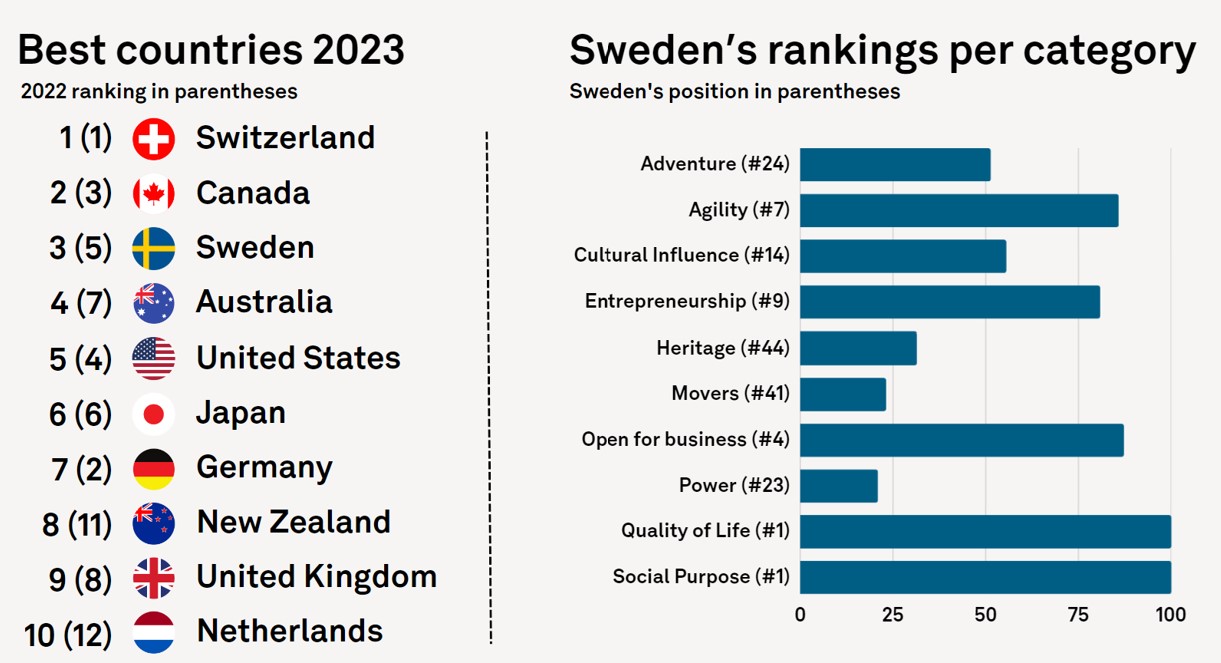Why international buyers are pivoting towards Sweden
Prospective buyers are turning to Sweden in greater numbers in a sign that recent price falls, together with a weak Krona, are presenting an attractive entry point for overseas buyers
3 minutes to read
Exclude Denmark, Norway and Germany, and foreign ownership of second homes in Sweden increased 6.3% in 2022 compared to prior to the pandemic. Add its neighbouring countries to the mix and the figure slips to 0.6% over the same period. Sweden it seems is appealing to a more diverse mix of buyers.

“Sweden has flown under the radar of international for many years, but its fundamentals stack up; strong demand, limited supply in a safe and private environment,” said Jason Mansfield, of Knight Frank’s International Department.
Jason adds, “Higher mortgage costs have prompted domestic buyers to stay put, leading sales volumes to slow. This has provided foreign buyers, particularly cash purchasers, with an opportunity.”
Price falls bottoming out
House prices in Sweden sit 13% below their peak in Q2 2022 but surged 55% in the decade prior to the pandemic.

Like many advanced economies, housebuilding has stalled since the start of the pandemic as supply chains and tight labour markets have curtailed development. This lack of stock will cushion prices.
Interest rates
Inflation in Sweden slowed sharply in 2023, from 12% to 4% and is approaching the central bank’s target of a 2% annual pace. Dovish analysts think the Riksbank should cut rates quickly now, to avoid the monetary drag on the economy becoming more severe. GDP in Sweden is forecast to fall to 0.6% in 2024 according to the IMF.
Financial markets expect Sweden’s Riksbank to start cutting interest rates in May 2024, any further deterioration in economic prospects could see the central bank act sooner.
Buyer sentiment is expected to improve once the central bank starts to move, leading to higher sales volumes in the second half of the year. This presents a narrow window of opportunity for overseas buyers before domestic demand starts to recover.
Low taxes
Property taxes are low. Non-residents pay 1.5% in purchase costs if a cash buyer and 3.5% if using finance, this compares to 12% in Berlin and 8% in Paris. Plus, Sweden abolished its inheritance tax in 2005 and its wealth tax in 2007.
According to Johan Linde, Head of International Residential at Knight Frank’s partners in Sweden, Croisette, “Unlike in neighbouring Denmark where foreign buyers can only purchase if they have lived in the country for five years or have gained permanent residency, Sweden has no such restrictions”.

Currency play
The Swedish currency has been sliding consistently since late 2021, losing around 20% of its value by the time it hit a record low of SEK11.9975 per euro in mid-2023, but the krona has since stabilised, appreciating 6% against the euro since the Riksbank began “hedging” its foreign currency exposure in September 2023.
Quality of life
A staple at the top of global quality-of-life rankings, the OECD’s better life rankings confirms, “Sweden outperforms the average in income, jobs, education, health, environmental quality, social connections, civic engagement, safety and life satisfaction.”
The Nordic country also ranks first for quality of life in US News, the study is based on questions asked to over 17,000 persons from 36 countries, whilst Stockholm ranks fifth in Monocle’s top 25 liveable cities.

Source: US News
To learn more about the luxury residential market in Stockholm, Malmö or Gothenburg contact Jason Mansfield or to sign up to our research on Swedish property markets click here.